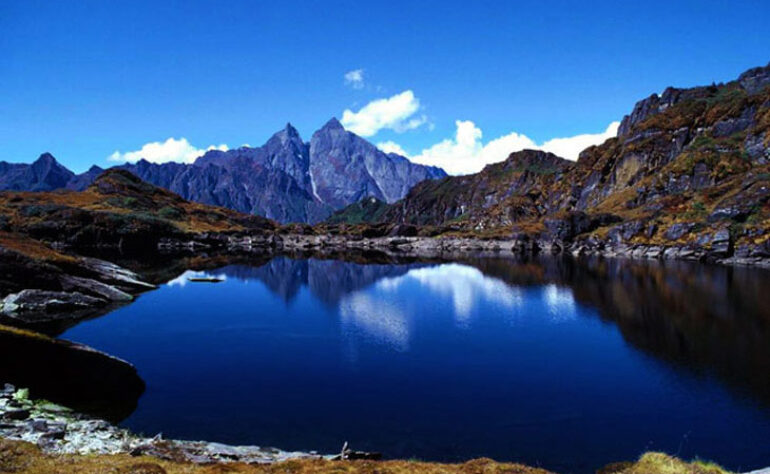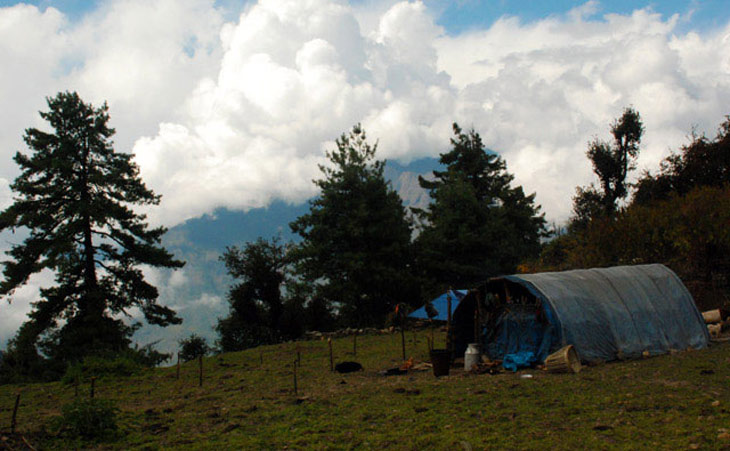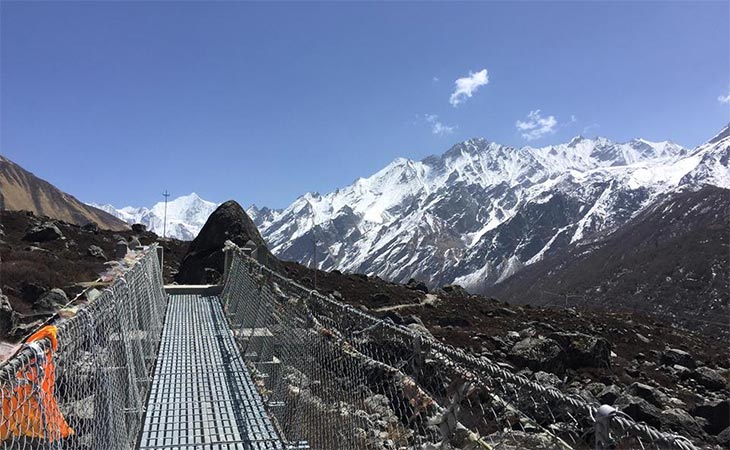
11 Sep 2023 Outdoor Himalayan
Overview
Complete Guide to Langtang Gosaikunda Trek is here to provide insights and plan systematically if anyone is planning for this trek. Langtang Gosaikunda Trek is one of the nearest trek routes from Kathmandu. This moderately difficult trek is a blend of culture and nature. Gosaikunda is a holy lake and its mesmerizing beauty attracts all trekkers. Traversing several authentic Tamang villages, experiencing warm hospitality, and immersing in their culture admire this trek’s authenticity. Trek past the attractive Langtang Valley, an ancient Kyanjin and Sing Gompa, and beautiful landscapes witnessing diverse flora and flora in the Langtang National Park’s vicinity. Pass through the highest point of the trek Lauribina Pass (4610 m) to reach Gosaikunda. From there, relish the stunning views of Langtang ranges and Ganesh Himal.
Highlights
- Sacred Gosaikunda Lake (4381 m) and other holy lakes in the vicinity
- Attractive Langtang Valley
- Authentic Tamang Villages, their culture, and warm hospitality
- Lauribina Pass (4610 m)-the highest point of the trek
- Stunning Langtang ranges and Ganesh Himal
- Beautiful landscapes, diverse flora and fauna within the Langtang National Park
Facilities during the Langtang Gosaikunda Trek
Accommodation
Local-owned basic but comfortable teahouses are the accommodation. They provide beds, pillows, and blankets. The attached bathrooms are there in the lower regions and as elevation rises bathrooms are outside the teahouses. Pay an additional cost for the use of Wi-Fi, laundry, hot showers, and charging electronics.
Meal
Dal-Bhat is the most popular meal served with fresh green vegetables and some pickles. Most healthy and energy-giving meals throughout the trek. There is also an option for noodles, soup, eggs, roti, and hot drinks.
Drinking water
Drinking water options are tap water, boiled water paying extra at teahouses, or bottled water. Bring a water bottle for ease, and to minimize plastic wastage. Also, bring water purifying tablets for safety and to prevent waterborne diseases.
Best Time for Langtang Gosaikunda Trek
Spring (March to May), and Autumn (September to November) offer clear views with pleasant weather and stable temperatures. The comfortable trekking trails and availability of accommodation make both Autumn and Spring seasons the best time for Langtang Gosaikunda Trek. Winter and Monsoon are off-season and not suitable for trekking due to unpredictable weather, and unstable temperatures.

Trekking Permits
a. Langtang National Park (LNP)
USD 30/person (Foreigners)
USD 15/person (SAARC Nationals)
b. Trekkers Information Management System (TIMS)
NPR 2000/person (Foreigners)
NPR 1000/person (SAARC Nationals)
NPR 500/person (Foreign Officials and their families)
Trek Route for Langtang Gosaikunda Trek
The Langtang Gosaikunda Trek can be accessible via roadway route only. From Kathmandu to Syabrubesi, take a public or private vehicle that best prefers you. From, Syabrubesi, commence the trek following the itinerary schedule.
Trek Route:
Syabrubesi-Lama Hotel -Langtang Village -Kyanjing Gompa -Thulo Syabru -Sing Gompa-Gosainkunda via Lauribina-Thare Pati –Kutumsang-Chisopani
How difficult is the Langtang Gosaikunda Trek?
Langtang Gosaikunda trekking trail is off-beat and considered a moderately difficult trek. The region’s remoteness, rough paths, steep ascends and descends, less availability of comfortable accommodation, and high elevations are factors that make this trek difficult. However, trekkers having good physical fitness can smoothly complete the trek. Thus, we recommend to participate in exercises and short hikes before the trek.
Altitude Sickness in Langtang Gosaikunda Trek
Trekkers can suffer altitude sickness in Langtang Gosaikunda Trek and it is normal. As the elevation rises, there is a high chance of getting altitude sickness. But, with proper acclimatization rest, following the guide’s instructions, and adjusting to the altitude, it is preventable.
Symptoms and Preventions for Altitude Sickness
Some common symptoms of Altitude Sickness are:
Headache, nausea, dizziness, uneasiness, appetite, and sleep loss, and on extreme some can experience unconsciousness and hallucination.
Preventions for Altitude Sickness are:
- Take an acclimatization rest
- Inform the guide
- Climb slowly and gradually
- Keep yourself Hydrated
- Avoid alcohol and salty foods
- Know your body limit
- Take a complete rest and sleep
- Take medicine consulting a guide
Physical Fitness for Langtang Gosaikunda Trek
Langtang Gosaikunda Trek is demanding as it is an off-beat trail and remote. The trekking trail is rugged consisting of steep ascends, and descends. The elevation gain is another challenge for trekkers. Thus, we suggest you participate in cardiovascular physical exercises, short hikes, and necessary check-ups before the trek. Build stamina and physical fitness to complete the trek successfully.
Best Ways to get to Gosaikunda from Kathmandu
From Kathmandu, the best way to get to Gosaikunda is via public or private vehicle. As your preference, take a vehicle ride to Syabrubesi and start the trek following the itinerary route.

Proposed Itinerary
Day 01: Arrival and transfer to hotel
Day 02: Syabrubesi (1503m) from Kathmandu
Day 03: Trek from Syabrubesi to Lama Hotel (2480 m)
Day 04: Continue trekking from Lama Hotel to Langtang Village (3541 m)
Day 05: Trek to Kyanjing Gompa (3870 m) and stay overnight at a local teahouse
Day 06: Hike to Kyanjing Gomba (4773m) and back to the teahouse
Day 07: Trek to Lama Hotel (2480 m)
Day 08: Continue trekking and stop for the night in a local teahouse at Thulo Syabru (2200 m)
Day 09: Trek uphill to Sing Gompa (3580 m)
Day 10: Trek further high to Gosainkunda (4381 m)
Day 11: Continue uphill trekking to Lauribina (4610 m), descend to Thare Pati (3600 m)
Day 12: Trek from Thare Pati to Kutumsang
Day 13: Continue hiking to Chisopani
Day 14: Walk from Chisopani – to Kathmandu, concluding the trekking
Day 15: International departure
Note: We have Langtang Region Trek packages of 7 to 15 days, to choose from that best suit your preferences. Itinerary Customization is flexible with us.
Packing List
Sturdy hiking boots
Rubber sandals
Windcheater jacket
Thermals
Down Jacket
Fleece
Long sleeve shirts
Full finger Gloves
Towels
Inner garments
Trekking pants
Trousers
Shorts
Socks
Sleeping bag
Down jacket
LED headlight
Water bottle
First-aid kit
Water purification solution
Trekking poles
Raincoat
Sunglasses
Socks
Thermal cap
Sunscreen
Langtang Gosaikunda Trek FAQs
Can I trek solo for the Langtang Gosaikunda Trek?
No, solo trekking is not allowed for the Langtang Gosaikunda Trek. One guide is compulsory for this trek as this region is remote.
Is the Langtang Gosaikunda Trek easy?
Langtang Gosaikunda Trek is a medium-level trek and hence not easy.
What is the highest point of the Langtang Gosaikunda Trek?
Lauribina Pass at an elevation of 4610 m is the highest point of the Langtang Gosaikunda Trek.
Is the Langtang Gosainkunda Trek itinerary flexible?
Yes, the trek itinerary is flexible, and customizable to best suit your preference.
TAGS: Complete Guide to Langtang Gosaikunda Trek Gosaikunda Langtang region Lauribina Pass

